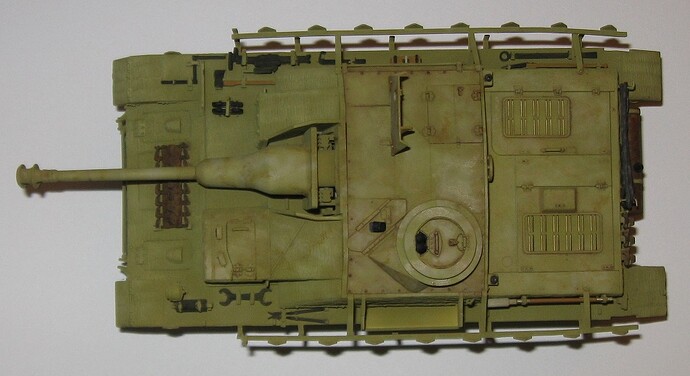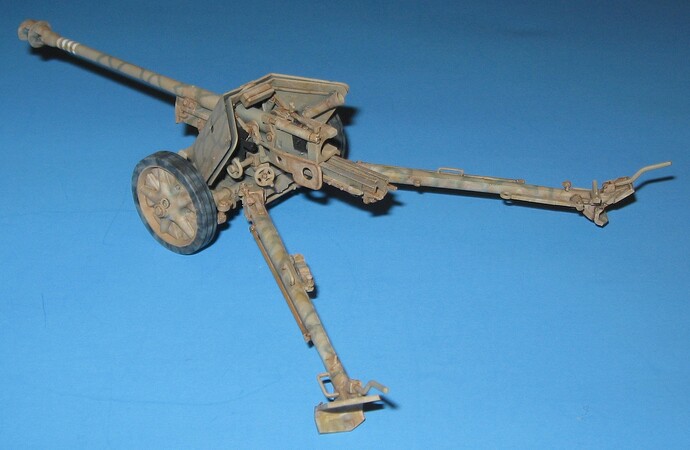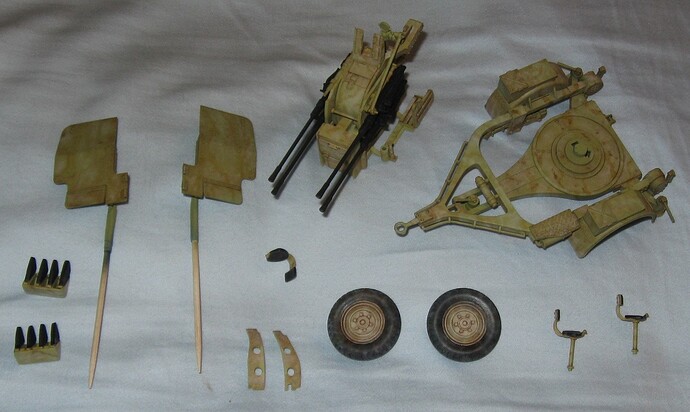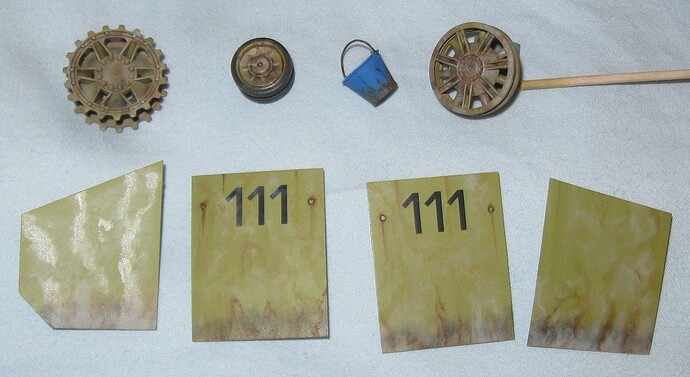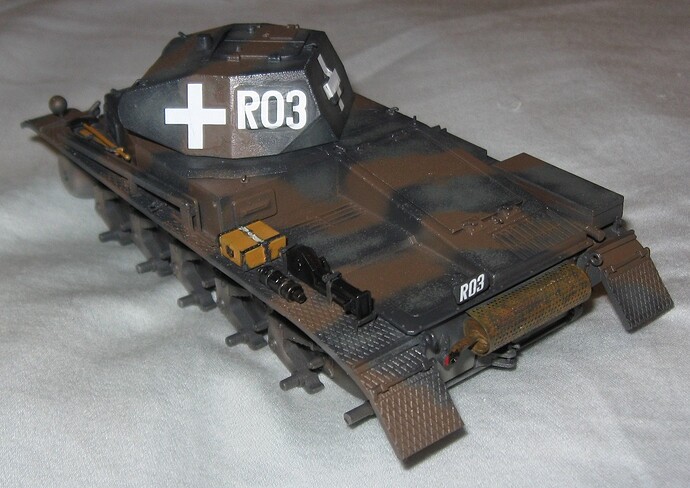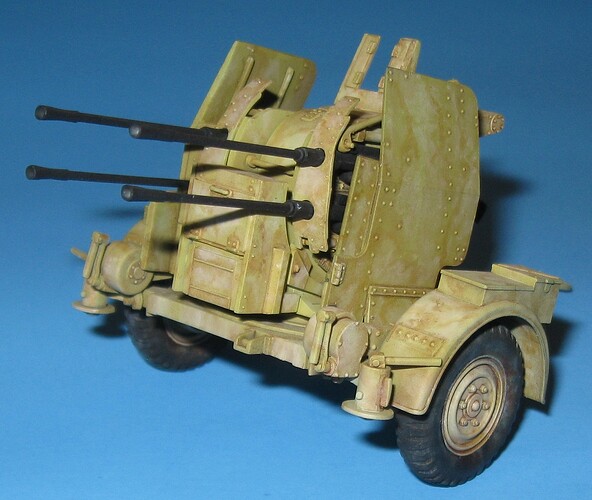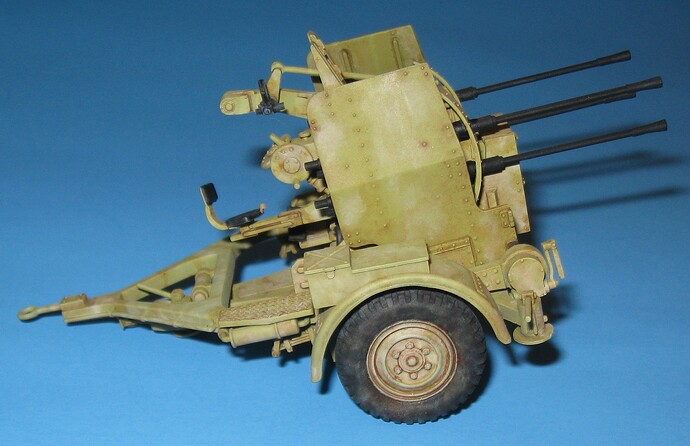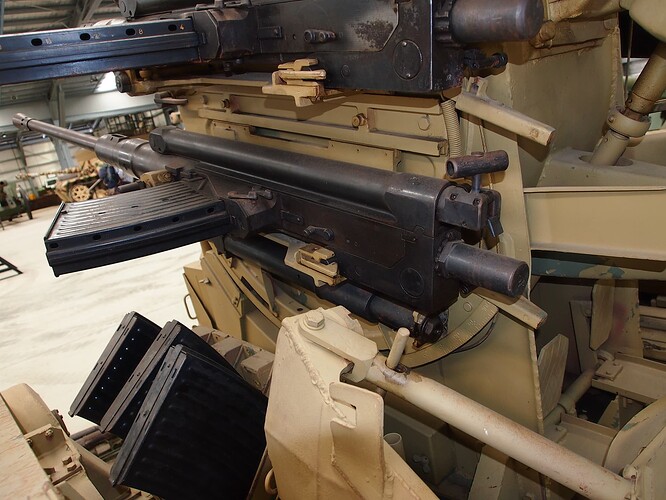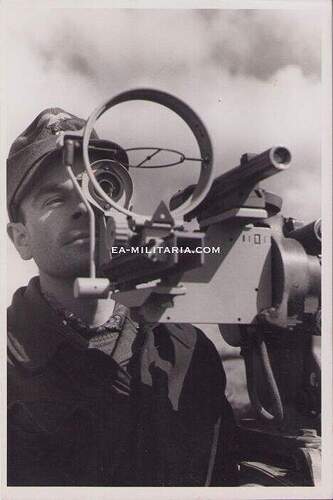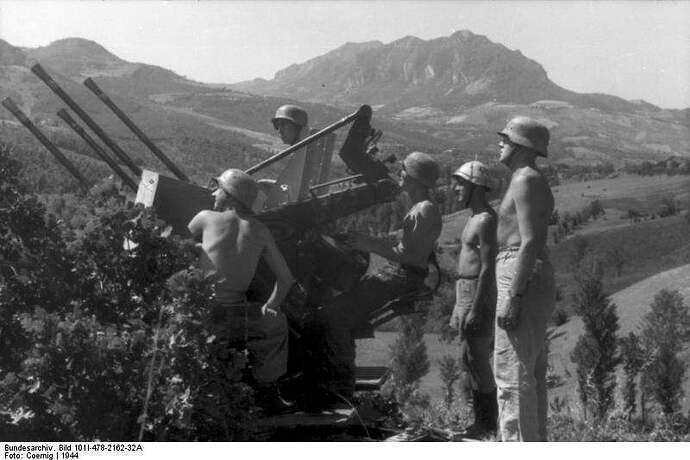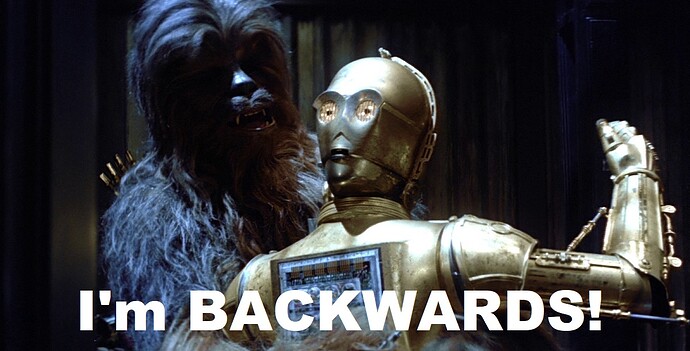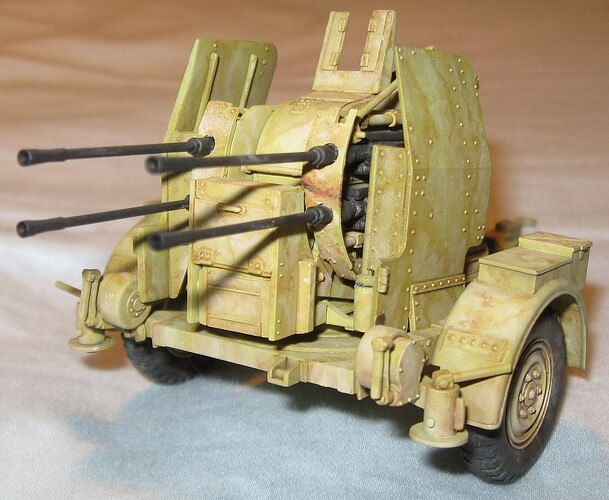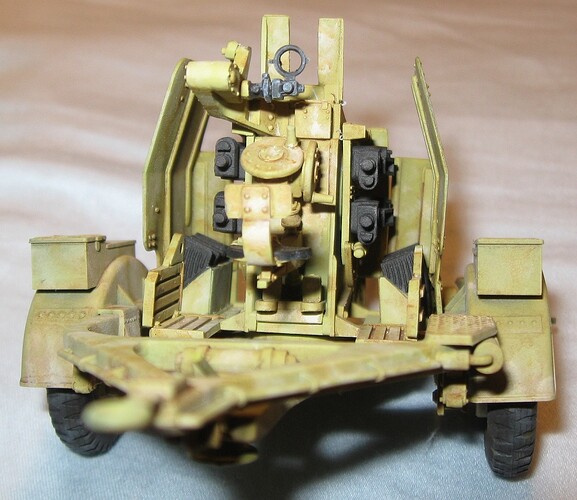With the Jagdpanzer IV and Borgward finally finished, I am circling back to complete more models started in the winter of 2022.
Since the Jagdpanzer IV ended up too dark, I am trying to exercise much greater control when using oil paints on the Sturmgeschutz IV. In the picture above, the engine deck, gun, and roof were weathered with oil paints. The rest of the model awaits such treatment. My hope is that by applying oil paints in short sessions spread over many days, I will not get tired and sloppy. This should result in a more vibrant model.
For the last few models I applied a satin clear coat before using oil paints. Satin coats are not glossy enough to prevent oil washes from spreading. Therefore, I intend to use a gloss clear coat on the next model and see if that works better.
The picture above reveals one unfortunate error–paint did not reach the brass pieces under the engine deck grills. In the future, I will prepare stuff like that with black primer. The areas beneath the periscopes were so prepared and look much better.
The Tamiya Panzer II from March 2022 also makes a return. After sanding out the horrible, hand painted camouflage, the model received a new base coat of Panzer Gray. That was also sanded before applying light gray mottling and chocolate brown stripes.
The updated camouflage looks significantly better. The hue was intentionally brought up so that when oil paints knock it down, the net result will amount to zero. The underside of the vehicle also received preliminary weathering with an airbrush.
This model illustrates something that keeps coming up. Vallejo Game Color and Model Air paints often do not play well together, resulting in wonky spray characteristics. To achieve more consistent results, I am considering duplicating select Game Color paints with Model Air equivalents.
